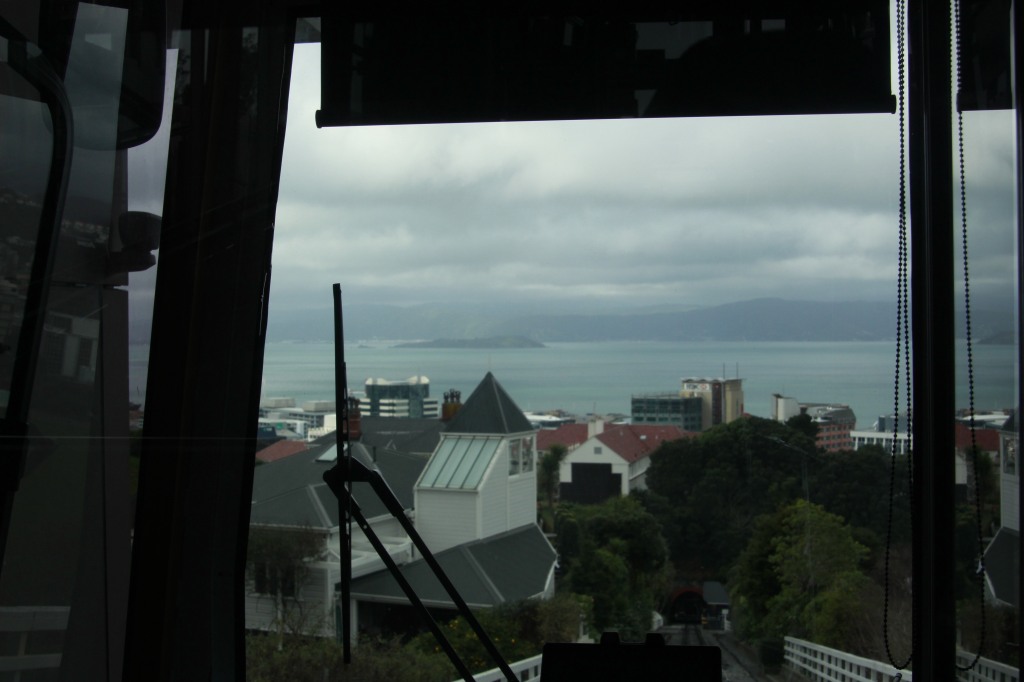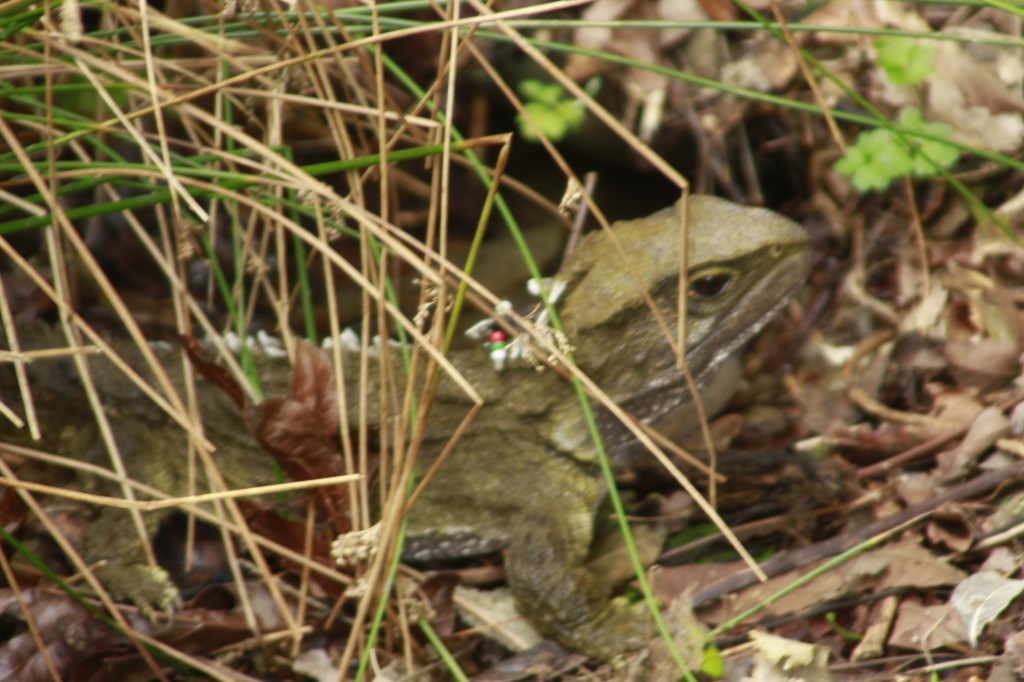
I wasn’t expecting to be as delighted with Zealandia as I was, as I hadn’t really heard of it until we got to New Zealand. My bad. Zealandia is the previous town dam that has been converted into a conservation area, with high fences and the removal of nonindigenous species. They have also added a colony of tuatara to improve the chances of the species survival.
Now, I’ve always had a soft spot for tuatara, which look like a lizard but are actually in their own distinct Order. The animals have a third eye, which is covered in skin and scales, but does have a lens and retina and rods. I never thought I would see one on our trip, as they as close to extinction and found mainly on islands that don’t support a population of nonindigenous predators like cats and weasels. I saw them here and in Picton! In Zealandia, I saw them in their natural habitat, sunning themselves, as craggy and spiny as in any photos I’ve seen of them. I was as excited as a three year old at a party.
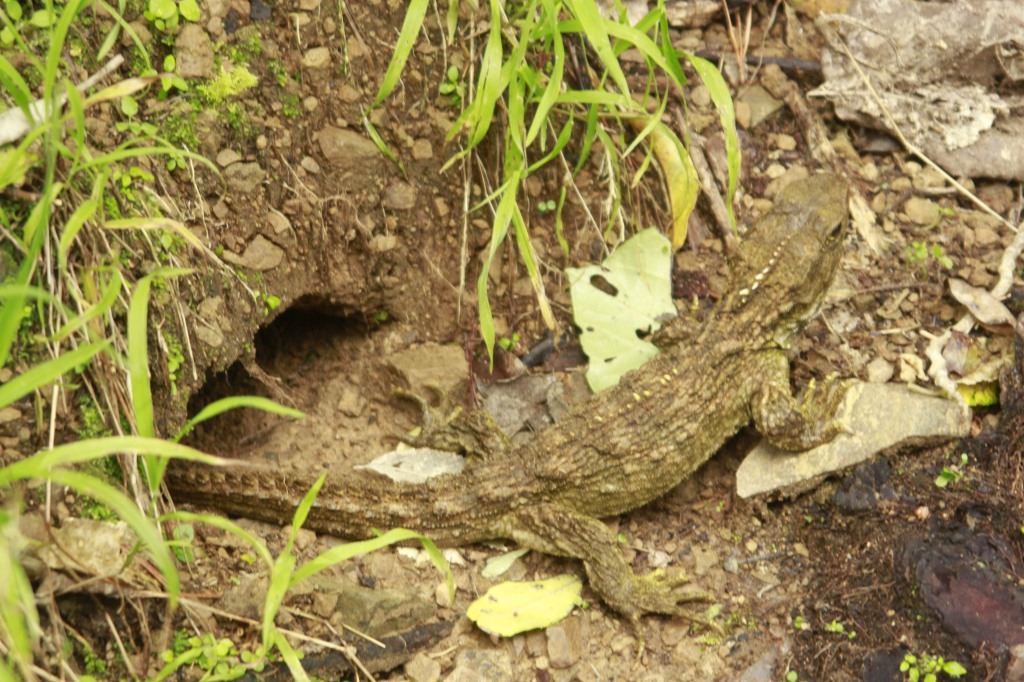
The only weta we saw was crushed and dead; a female with an egg shooter. She might have been attacked by a bird, or stepped on unknowingly by a hiker. She was a big girl – I’ve only seen stick insects that were larger than her.
Then there were the birds. My favourites were the Kākās, a type of temperate parrot like the Keas and the flightless Kākāpōs (New Zealand really favour names starting in K for parrots). Kākās are brown and resemble corellas. At one of their feeding stations, a single kākā flew close enough that I felt its wing brush my cheek. They aren’t tame, just fearless.
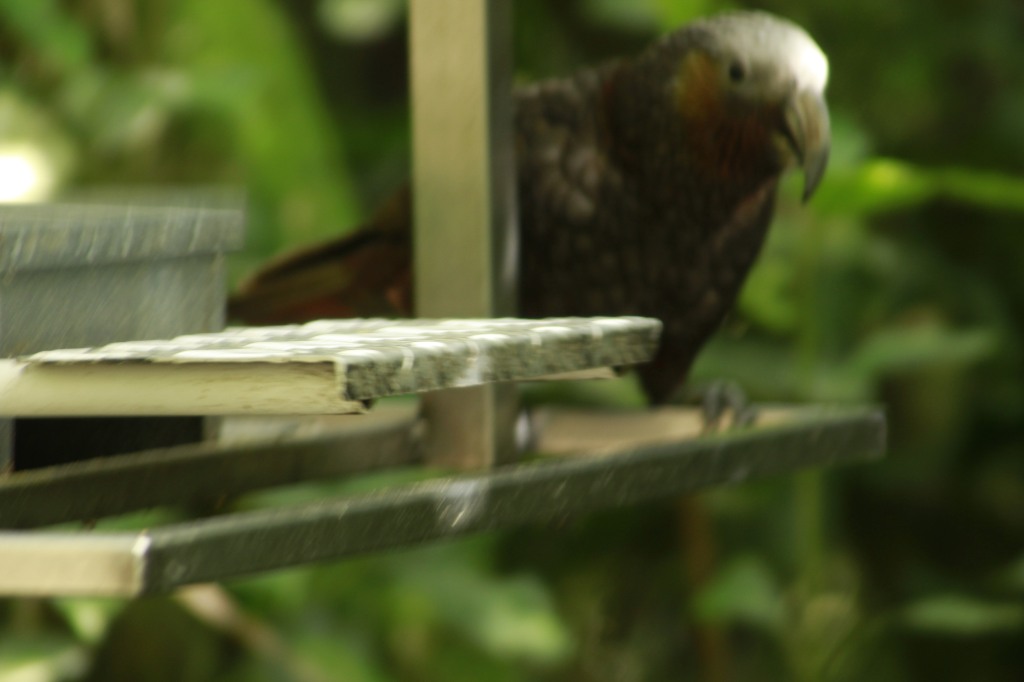
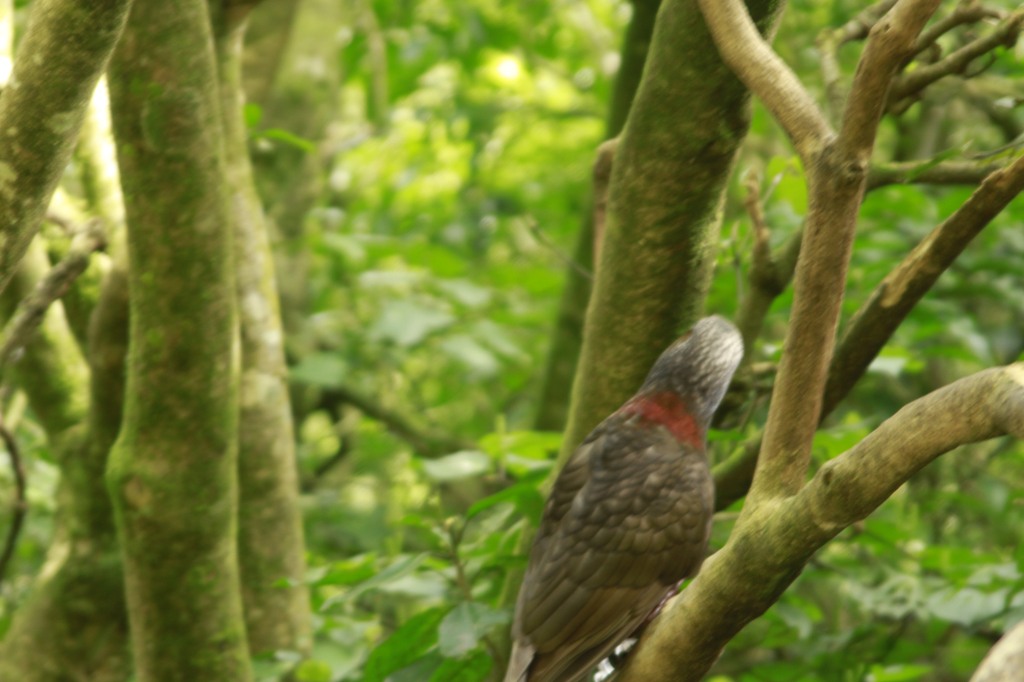
As well, we saw several colonies of shags – which were attacked by an eagle. There were three species of shags. They panicked as they were strafed from the air. This is why so many New Zealand bird are plain, they are camouflaged from predators that attack from the sky. There was a supersized eagle that went extinct when the moa went extinct.
Speaking of moas, we were shown vegetation that changes shape as it grows, due to evolving to avoid being eaten by the moa. While a juvenile, it is spiky to discourage grazing by the herbivorous moa. Once it grows above the head height of a moa, the leaves revert to their adult form. With moas extinct, will this species eventually lose this adaptation? The moas were the equivalent of our Australian kangaroos or European deer – their loss is still impacting the overall ecology of New Zealand.
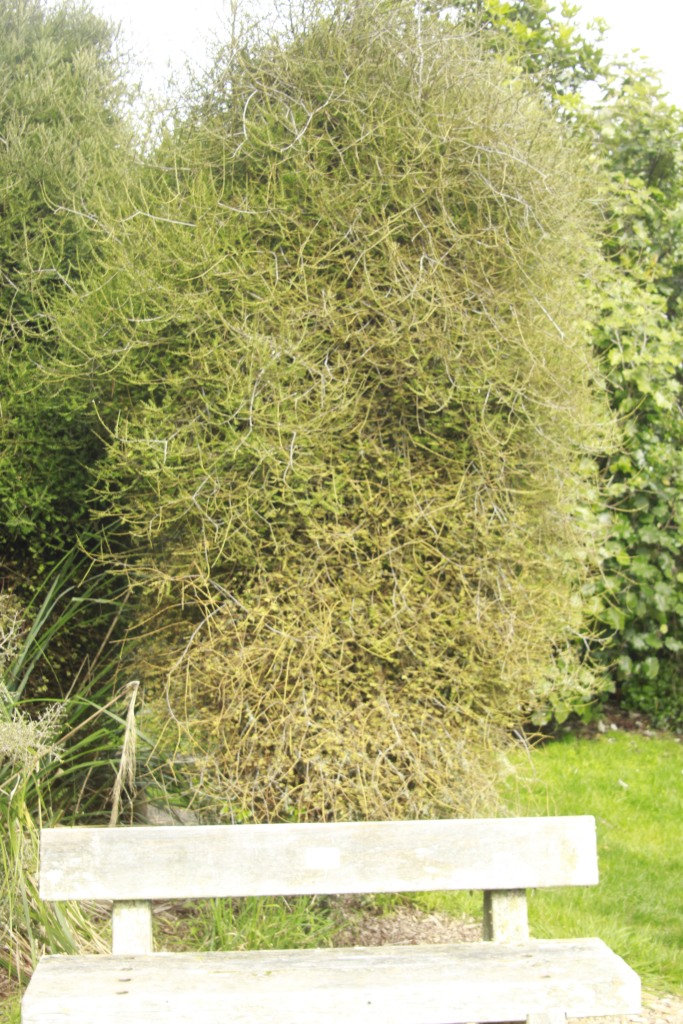
The bush reminded me of Binna Burra, but with more fern trees and moa food plants. Many more birds but no ground mammals. The only indigenous mammals – before the advent of man – were bats; tiny bats, not flying foxes. We saw many local species of birds, and a gecko, and even saw evidence of the kiwi population.

After spending hours at Zealandia, we took the shuttle bus to the Cable Car Museum, and then rode the cable car back to the city. it had been a cloudy, drizzly day, but who noticed the weather when adventuring? We walked through the city, and had a late lunch, before heading back to our hotel. I slept like a log that night.
